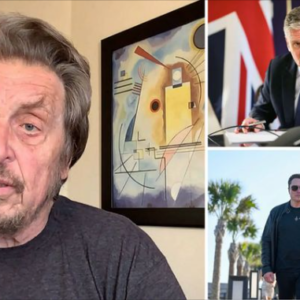Editor’s Note: Call to Earth is a CNN editorial series committed to reporting on the environmental challenges facing our planet, together with the solutions. Rolex’s Perpetual Planet Initiative has partnered with CNN to drive awareness and education around key sustainability issues and to inspire positive action.
Palawan, a cluster of islands in the Philippines, is breathtakingly beautiful. Home to underground rivers, turquoise coastlines and lush mountain peaks, it has earned the name of the country’s “last ecological frontier.”
The paradise archipelago has not gone unrecognized. The entire area of Palawan, covering more than 1,700 islands, has been designated a biosphere reserve by UNESCO, and it also hosts two world heritage sites, the Puerto-Princesa Subterranean River National Park and Tubbataha Reefs.
But despite these designations, threats still remain from mining, the illegal wildlife trade, climate change and deforestation. According to Global Forest Watch, Palawan had the most tree cover loss in the country between 2001 and 2023.
Conservationist Karina May Reyes, who refers to herself as KM for short, is on a mission to protect the archipelago, alongside a small team of people that form the nonprofit Centre for Sustainability PH (CS).
“Palawan is super special because from ridge to reef, you have pristine landscapes – mountains that still retain old growth canopy cover all the way to coral reefs that still have incredible biodiversity, whether you’re after manta rays or whale sharks or tiger sharks or turtles,” she tells CNN.

Rainforests once covered around 90% of the Philippines, she explains, but now less than 3% of intact old growth forest remains – the majority of which is in Palawan. “Our mission is to conserve the Philippines’ last remaining 3% of pristine rainforest through the establishment of national parks,” she says.
Pristine peaks
The team’s first project began in 2014, targeting Cleopatra’s Needle, one of the mystical mountains on the main island of Palawan outside the province’s capital city of Puerto Princesa. Named after the obelisk-shaped natural stone on its highest peak, it’s one of the oldest and most diverse forests in all of the Philippines and is a safe haven for the island’s threatened and endemic species, such as the Palawan hornbill, bearcat and pangolin.
It is also the ancestral domain of the indigenous Batak tribe, who rely on the natural resources of the surrounding forest to sustain their livelihoods.
“If we didn’t have indigenous Batak still here on (the) land, we wouldn’t continue to have the forests that we do. It’s as a result and as a blessing of their stewardship of the area that we still have access to these forests and they haven’t been destroyed,” says Reyes.
Working closely with the Batak people, CS gathered data on the area, building a case for why it should be protected, and in 2017, the hard work paid off, with the entire area of Cleopatra’s Needle – more than 41,000 hectares – declared a critical habitat. The designation includes a ban on the extraction of minerals, logging, quarrying and wildlife trading.

Now, their attention has turned to Sultan Peak, a mountain in the southern half of Palawan island, which has no formal protection. Rich in nickel, an essential component in clean energy technologies like electric vehicles, wind turbines and solar panels, the area is under threat from mining.
“The area that we’re trying to protect is about 8,000 hectares, pristine rainforest, also this incredible watershed system, and it’s completely unstudied,” says Reyes.
The CS team is looking to document the region’s flora and fauna to help justify its protection, and for this it has mobilized a network of citizen scientists to take photos of plants and animals, which can be uploaded to a database on the platform iNaturalist, an open-source tool that identifies species.
“We’re building up a database for biodiversity of this area,” says Aubrey Jayne Padilla, research program coordinator for CS. “The local community (are) involved in compiling the data … We take and document everything that we see on the trail.”
Reyes hopes that they will be able to protect the area within three years. But even after getting community buy-in and gathering an array of scientific data, challenges remain.
“At the end of the day, if you don’t have politicians and decision makers on board, then there’s no one there to sign off that law,” she says.
Reyes sees part of her role as communicating the area’s wider value. “Protecting these areas is so important, not just for biodiversity, but also for protecting vulnerable communities from climate change,” she says.







